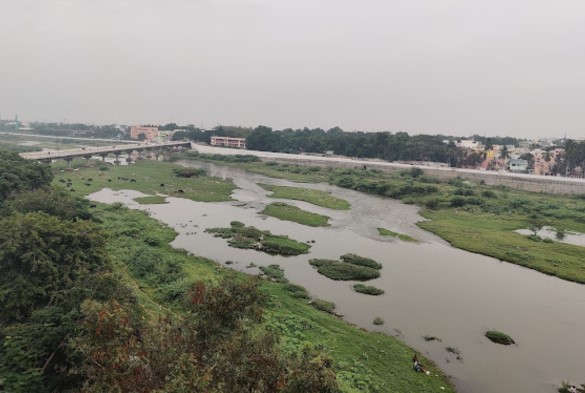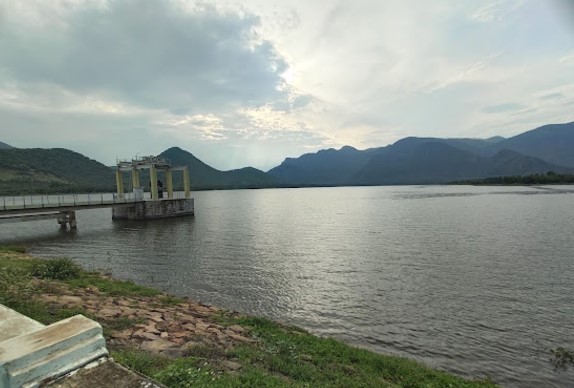Piranmalai: A Sacred Hill Shrine with Rich History and Spiritual Significance
Piranmalai, located in the Sivaganga district of Tamil Nadu, is a prominent Hindu temple dedicated to Lord Shiva, known as Kodunkundranathar, and situated on a fortified hill. The place is historically significant, spiritually revered, and architecturally impressive, and it stands as the 249th Devaram Paadal Petra Shiva Sthalam, one of the important Tevara Stalams in the Pandya region of Tamil Nadu. The temple is also known for its unique multi-level structure and its association with several legends and historical events.
Historical and Mythological Background
- The temple at Piranmalai is set atop a hill, referred to as Prachandragiri or Katoragiri, and is often said to be in the shape of a Shivalingam. It is believed that this temple and hill have been venerated for over 2,000 years. The region was once known as Parambumalai and later as Mullaimangalanadu, after the legend of Vallal Paari, a benevolent king who is said to have lent his golden chariot to a jasmine plant (Mullai), allowing it to flourish in the area. Thirugnanasambandar, one of the foremost Tamil Saivite saints, mentioned Lord Shiva of this temple as "Embiram," and the place subsequently came to be called Piranmalai.
- Piranmalai also has associations with Vallal Paari, who ruled the region. The statue of King Paari, who famously donated his chariot to the Mullai creeper, is placed at the base of the hill. During his reign, the place was called Pareesuram, and it is believed that King Paari was instrumental in the temple's development.
The Multi-Level Temple Structure
Piranmalai’s temple is unique due to its three-tiered structure, which represents different realms in Hindu cosmology: Pathalam (the underworld), Boologam (the earthly realm), and Kailayam (the heavenly realm). Each stage houses a distinct shrine, and this three-dimensional division makes the temple a symbol of the universe's cosmic order.
Pathalam (Lower Realm): At the base of the hill is the Kodunkundranathar Temple, where Lord Shiva is enshrined in the form of a Shivalinga. The consort of Shiva here is Kuyilamutha Nayaki. The temple is particularly known for being a place where unmarried individuals seek blessings for marriage.
Boologam (Earthly Realm): The middle level houses a shrine dedicated to Bhairavar. This stage is noted for its unique characteristics, including the absence of a dog, which is traditionally associated with Bhairavar worship. In this section, Artha Jama Pooja (a special worship) is also performed, adding to the temple's distinct rituals.
Kailayam (Heavenly Realm): At the highest level, the temple is dedicated to Lord Shiva in the form of Mangaibakar and Devi Parvati, depicted in Kalyana Kolam (the divine wedding form). This sanctum is designed without separate pillars, characteristic of the rock-cut cave or kudaivarai style. The temple is believed to have been built for the sage Agasthiya to have a divine darshan of Shiva and Parvati.
The temple lacks a Dwajasthambam (flagstaff) and Rishabam (the sacred bull), which are typically found in front of Shiva temples, making it distinct from other traditional Shiva temples.
HISTORY:
Piranmalai: The Historic Hill Temple and the Capital of Vallal Paari
Piranmalai, also known as Parambumalai in ancient times, is a fortified hill located at an elevation of over 2,000 feet. It is famously regarded as the 2,000-year-old capital of the Vallal Paari kingdom. The region is steeped in history and legend, holding immense significance not only in Tamil culture but also for its spiritual importance.
Historical and Legendary Significance:
- Vallal Paari and Mullaimangalanadu: Piranmalai was once the capital of Vallal Paari, a legendary king known for his generosity. The region was later named Mullaimangalanadu, inspired by the legend of King Paari's golden chariot. According to the story, King Paari found the Mullai creeper lying on the ground and, in an act of kindness, lent his golden chariot to lift and support the plant. This miraculous event transformed the area, leading to its name.
- Fortified Hill: Piranmalai is a prominent fortified hill, which served as an important military and strategic site in the past. The hill offers panoramic views of the surrounding landscape and features Pandava Theerthams, five sacred rock formations that are integral to the temple complex.
Sacred Sites and Spiritual Importance:
- Bhairavar Temple and Pandava Theerthams: At the peak of the hill, there is a Bhairavar temple, dedicated to Lord Bhairava, a guardian deity. Additionally, the Pandava Theerthams are five rock formations, which are sacred and associated with the Pandavas of the Mahabharata.
- Muslim Sacred Site: The hill also holds significance for the Muslim community, with a dargah (tomb) of Waliyullah Sheikh Abdullah Saheb located at its peak. This highlights the cultural and religious diversity of the region, where both Hindu and Muslim communities revere the hill.
Historical and Military Importance:
- Fort Marudhu: At the foothill of Piranmalai, traces of a moat and the remnants of Fort Marudhu can be found. The fort was dismantled in the early 19th century, but it was once a crucial military site. The Marudhu brothers were prominent figures in the Sivagangai region during the 18th century and played a significant role in resisting British rule. The Marudhus waged war against the British and the Arcot Nawab alliance, making Piranmalai an important historical landmark in their struggle for independence.
- Umai Durai's Hiding Place: Piranmalai is also historically significant as the place where Umai Durai, the younger brother of the famed Tamil rebel Kattabomman, was hidden by the Marudhu brothers. He was concealed in an inaccessible cave on the hill known as Umaiyan Kudambu, which is a site of historical interest.
Natural and Environmental Features:
- Dense Jungle and Maruthupandiar's Rule: During the rule of Maruthupandiar in the late 17th century, Piranmalai was surrounded by a dense jungle that stretched from the Eastern Ghats to the Palk Straits. This vast forested area made the region a natural fortress, contributing to its strategic and religious importance.
The Temple Complex:
- Hill Temple: The temple at Piranmalai is a significant hill temple that can be accessed by a flight of steps. It was historically part of the Pandya Kingdom, and several contributions were made to the temple by the Marudhu brothers. The temple complex is vast, with several shrines and sacred sites spread across the hill.
Modern-Day Piranmalai:
Village and Local Areas: Today, the hilly region includes several villages, including Piranmalai Main, Mathagupatti, Pudupatti, Pappapatti, and Adiyarkulam. These areas are part of the larger Piranmalai village, which retains its historical, cultural, and spiritual significance.
Local Legends and Sacred Trees
- The Sthala Vruksham (temple tree) of Piranmalai is the Uranga Puli tree, known for its unique characteristic where its leaves do not sleep at night. Another mysterious tree in the area remains unnamed but is believed to hold spiritual importance.
The Contribution of the Marudu Brothers
Piranmalai is also historically associated with the Marudhu brothers, who were significant figures in the Sivaganga kingdom during the 18th century. They are known for their contributions to the temple, similar to their work at Kalaiyar Kovil. The Marudhu brothers also waged a famous war against the British and the Nawab of Arcot. During their period, Umai Durai, the younger brother of Kattabomman, is said to have been hidden in an inaccessible cave at Piranmalai.
Religious and Cultural Significance
- Tevara Hymns: The Naalvar (four great Tamil saints) have sung hymns in praise of Lord Shiva of this temple.
- Pandava Theerthams: The hill is home to five rock-cut peedas (stones), believed to be sanctified by the Pandavas.
- Sivaganga Country: The area around the temple was once the capital of the Vallal Paari dynasty, and the region came to be known as Pareesuram during his reign.
Muslim Reverence and Dargah
At the summit of the hill is a Dargah (Muslim shrine) of Waliyullah Sheikh Abdullah Saheb, which reflects the religious harmony in the region. Local Muslims regularly visit the shrine to pay their respects.
Modern-Day Piranmalai
- Today, Piranmalai is a revered pilgrimage site, attracting visitors not only for its historical and spiritual significance but also for its natural beauty. The temple is under the administration of Kundrakudi Ponnambala Adigalar, and locals continue to visit it regularly, especially to pay homage at the dargah and seek the blessings of Lord Shiva for marital bliss and prosperity.
- The temple's rich legacy, its association with historical figures like King Paari, and its representation of cosmic realms make it an important place of worship and a symbol of divine grace. It stands as a testimony to the profound cultural, religious, and architectural heritage of Tamil Nadu.
PURANIC SIGNIFICANCE:
Fight between Vayu & Adishesha:
According to legend, Piranmalai is said to be a block of Mount Meru. A contest arose between Vayu the Lord of winds and the divine serpent Adisesha about their prowess. The race was that Vayu should break the Meru Mountain bound by Adisesha. Despite his best efforts Vayu could not succeed in moving the mount but some pieces fell on earth. One such piece fell here. It is on this hill, this temple is built in three tiers consisting of Padala Loka, earth and the hill. Lord Shiva graces from this temple. Since this hill is in the form of a Sivalingam, it is also called Prachandragiri and Katoragiri.
Agasthya witnessing Divine Marriage from South:
- As per popular Hindu Mythology, North went down due to the heavy weight caused by the huge crowd of Sages and Devas gathered there to attend the Shiva-Parvathi wedding. Lord Shiva sent the powerful dwarf sage Agasthya to go south to equalise the ground level. Agasthya came to Pothigai hills in the south. But Agasthya had to sacrifice the pleasure of joining the divine wedding party. Agasthya begged Lord that he should be able to get his darshan at all places of his choice during his pilgrimage. The boon granted, the sage enjoyed the Wedding function in many places including this place-Piranmalai.
- Lord Shiva in this hill temple is known as Mangaibaagar (also called Mangai Nayagar) and Goddess Parvati is known as Thenammal. In this hill, there is a natural stone carving that depicts the marriage of Lord Shiva and Goddess Parvati. It shows Lord Mangaibaagar holding hands with Goddess Thenammal. The temple is under the administration of Kundrakudi Devasthanam.
People worshipped Shiva here:
Bhrama, Saraswati, Agasthya, Subramanya and Nandi are believed to have worshipped Shiva here
ADMINISTRATION:
This temple is also under the control of Kundrakudi Ponnambal Adigalar.


